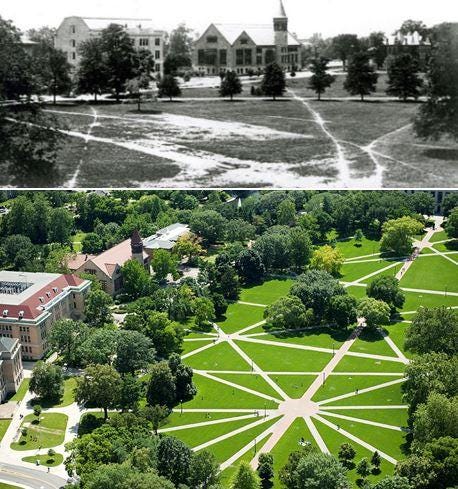Experimentation Is Not Only for Tech Teams
The famous 'Inspect & Adapt' is not reserved for Scrum teams only, and it can be an important and positive approach to your life.
Test the world. The world is not only different than you think, but it's changing. So, you have to keep touching the world to find out how does the world react to your thoughts, how is the world changing while you're developing things.
– Alistair Cockburn, co-author of Agile Manifesto and founder of Heart of Agile
Quote taken from a talk at Lean Digital Summit 2019, Paris, France (watch the full video here)
When we say experiments, a classroom or a laboratory may be the first association, or possibly work (especially if you’re in tech, product or marketing). However, there’s a lot of universal value in experimentation, testing assumptions, and learning.
Why Experimenting Can Improve Your Daily Life
Agile experiments are important in our private life because they provide a framework for trying new things, learning from them, and making continuous improvements. We’re not living in a vacuum, and our realities are simply too complex for ‘auto pilot’. (The world is not only different than you think, but it's changing.)
By setting goals, measuring results, and adapting based on regular feedback, we can make positive changes in our personal lives. On top, agile experimentation helps us overcome the fear of failure, since experiments are seen as an opportunity to learn and grow, rather than a test of our abilities (and value).
By applying agile experimentation to our private life, we foster a growth mindset, improve our problem-solving skills, and ultimately live a more interesting life.
How You Can Experiment in Your Daily Life
The key to agile experimentation is to be flexible and open-minded. Where possible invest a little, and learn a lot.
Use these examples just as ideas and a starting point. Don't be afraid to try other new things and pivot when necessary.
Try new things and approaches to your sleep, exercises, and eating:
Experiment with different morning routines
Test different forms of exercise
Test different sleep patterns
Try different healthy eating plans to find the most effective for your body
Experiment with your free time, hobbies, and giving back:
Try out new hobbies (bonus points if it’s something very new and unusual for you)
Test different forms of volunteering or giving back to find the ones that bring you the most fulfillment
Test out different time management strategies
Experiment with different social activities to find the ones that align with your personality and values
As mentioned, these are just starting ideas. You can also experiment with interactions and relationships, your job and career. You can experiment with anything from the (seemingly) small to important decisions and things in life.
Don’t Overdo It, and Remember the Purpose of Experimenting
The last piece of advice I have is to start small, be consistent, and don’t overdo this.
If you’re trying out a thing or two, that’s great. If you’re suddenly running 5 or 10 experiments in parallel, you’re (most likely) overdoing it and will not have time to properly reflect on the learnings.
Experimenting for the sake of experimenting beats the purpose.
Bonus: 2 Examples of Everyday Agility and Experimentation Beyond Tech
There is a whole world of Agile beyond software, technology, and ‘typical’ environments. There is Agile in a low- or non-tech context. It’s super interesting, relatable, and illustrates the Agile mindset and principles nicely – but it is not the first thing people think about when they think Agile.
This is why I wanted to share these 2 out-of-the-box examples of running agile experiments.
#1 Desire Paths
Desire paths form where the people actually walk (instead of following the pre-determined pathway). Historically, they were disliked and discouraged (e.g. by the people responsible for maintaining a park or other public spaces).
However, some places turned the process around: they do not put pavement in when the buildings are created, but rather waited for the paths to emerge.
This is a simple way to get experiment, get feedback and learn before committing (by creating actual paved paths). It’s also aesthetically pleasing:

#2 Rotterdam City Agility
In Rotterdam, the Netherlands, they first test out spots for bike racks, before committing to permanently placing them. Basically, they would bring and park the ‘mobile platform’ that replaces one car spot to accommodate up to 12 bicycles. Once it’s parked, they observe the usage.
In case it works out, the services will cement ‘real’ racks, if not – they simply move to another spot and test that one out.

If you found this interesting or useful, please share it with someone :)
Thanks for reading,
Milos





